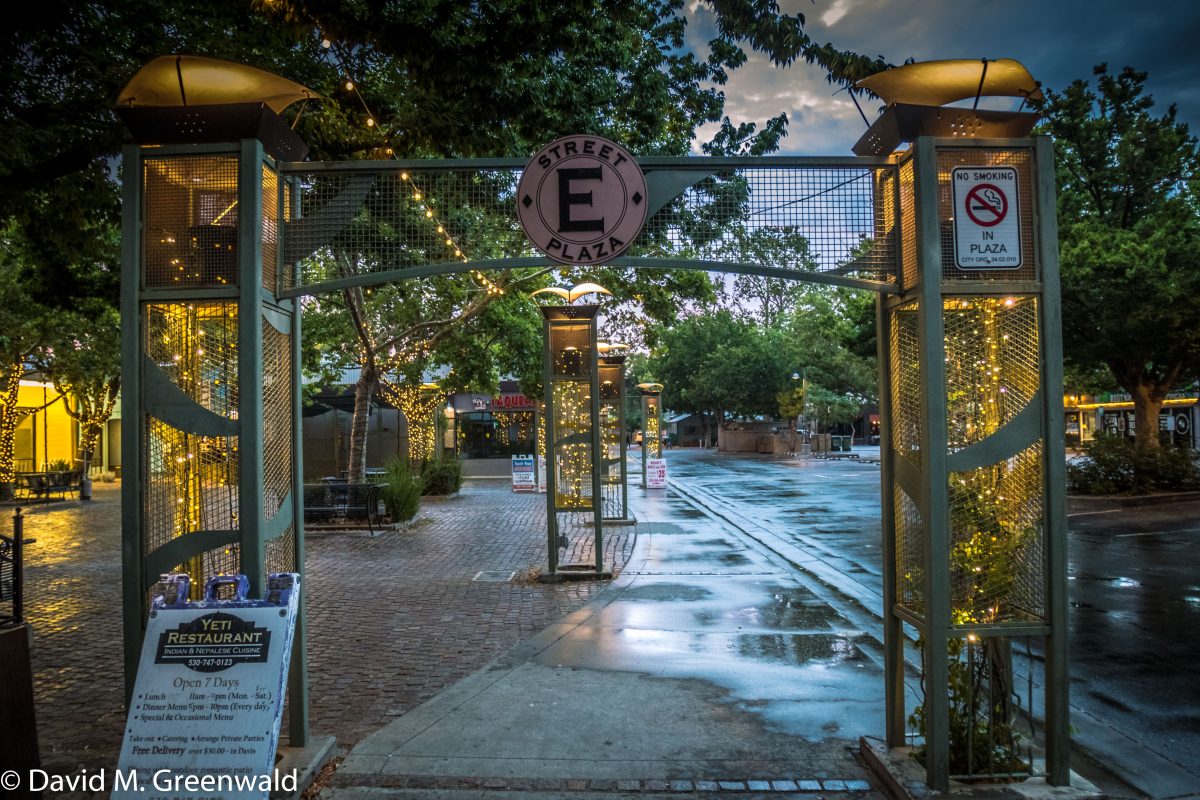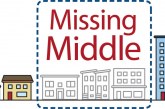

One of the big questions we asked back during the Trackside debate was – even if you believe that Trackside should go to four stories – should it have been approved at that time or was it better to wait for the Core Area Specific Plan to be approved and then be considered? That gets me wondering whether the time to attack the paid parking plan is now or after we have approved the CASP.
Before I answer that question, let us look at the September 11, 2018, staff report which was a check-in on the downtown planning. After all, if we are going through all this fuss and then going to radically change the downtown, perhaps now is not the best time.
Their parking diagnosis points out the following:
First, “A visitor’s First impression is that the downtown parking is often full.” Second, “Yet, simultaneously, hundreds of parking spaces in slightly less convenient garages and lots are empty even at the busiest times of the day and busiest weeks of the year.” Third, “This perceived shortage is happening because the most convenient curb parking spaces are free or cheap, while the garage spaces often cost more.”
Therefore, they conclude that “the most important response to this is to fix the management of the parking.”
That is basically the same analysis as the Parking Task Force gave and the consultants are giving. And it happens to mesh with many people’s observations.
So they basically recommend, “Continue implementing the 2014 Downtown Parking Management Plan” which includes two recommendations: (1) Charge the right prices for curb parking. Set rates at lowest rate needed to achieve 1-2 available spaces on every block. (2) Return all net new parking revenue to downtown to pay for public services.”
What about adding supply?
The Task Force concluded: “Even if the most efficient use of the available Downtown parking supply is made, increased demand for parking due to new development in Downtown and elsewhere in the City and UC Davis will create the need for an expansion of the Downtown parking inventory over time.”
Their recommendation was that supply be planned as soon as possible “in order to be prepared to act when appropriate.”
But as we have pointed out, the fund problem is probably insurmountable. We have not seen a reasonable proposal for adding supply – at least in the short term.
The DPAC (Downtown Plan Advisory Committee) made a recommendation on this and that was to “prioritize parking management before adding new parking.” That was based on a number of factors, including the advice of the consultant team.
But there are several factors at play here. First is the potential that use of automobiles will start to decline as climate change becomes more acute. Second, if housing does come to the downtown, that could generate parking, but at the same time increase customers without increasing traffic.
Third and most important is parking structures are expensive and right now we are about to introduce a ton of change into the area – why are we going to spend a huge amount of money for something that at least potentially could be unneeded or obsolete, based on future planning as well as future trends?
Part of why we might want to consider waiting could depend on the plan that emerges out of the DPAC process. For instance, if the city ends up recommending creating housing over retail and office, then parking is going to have to be a concurrent consideration. And while the majority of that parking might be for residents, perhaps you save one level per block for public parking?
Furthermore, the analysis that you add parking meters to the southeast quadrant is based on existing conditions. But what happens if you start changing existing conditions?
It is not clear how much consideration this point has gotten in the current debate.
Consider that this planning remains preliminary, but one concept is to “develop each sub-area of the downtown with a distinctive character,” but “together the sub-areas create a hierarchy of form and scale in Downtown, and reinforce overall Downtown Identity.
“A zoning code will guide built form, heights, and other development attributes. While the sub-area framework helps identify character areas, each sub-area can have multiple zones, and thus variety in built form, heights and other attributes.
“The expected result is predictable urban form that incorporates some flexibility to encourage creative design; and development that is economically viable.”
The upside of this is that they are looking at six different sub-areas within the downtown and the planned paid parking area would overlap with parts of two those – the G Street District and the Heart of Downtown.
But how is this all going to work? Remember, meters are expensive infrastructure – so making these changes in advance of massive changes to the downtown plan might not make much sense.
Furthermore, they are also looking at an Expanded E Street Plaza, a Third Street Square, and a Square South of Third Street.
They are also looking at a 10-20 year evolution which would be the 2nd Street Transformation.
This is mitigated, however, by another key point that Dan Parolek of Opticos Design made in September. He called it “incremental evolution,” and explained, “This is not going to happen overnight… It’s going to take time.”
A good case can therefore be made that we have a parking management problem now, and, while things are going to change in the next 10 to 20 years, we need to figure out a fix now.
These all need to be considerations, of course, for council – but that leaves me with three concluding thoughts. First, should we make these changes before we have even approved a final downtown design? Second, how do we make the parking situation workable now? And third, is there a compromise that can be reached by businesses who are probably harmed by current parking patterns but nervous that changes will further undermine their customer base?
—David M. Greenwald reporting







Um.
Um.
Let’s do a study!
Could someone please clarify:
1) Why we need individual stall meters instead of what’s at e.g. E St. “Plaza”*?
2) It’s a requirement to have a way to pay with coins?
3) Can we have dynamic pricing that’s changes automatically – within a certain range – on a constant basis… every hour or minute etc. to keep the Shoupian85?
4) Is there a rough or specific budget indicated for a system that does reservable spaces?
5) As far as technology goes, there’s always going to be something better every few years, so is there some general architecture philosophy that optimizes that it in terms of convenience and cost?
6) Can we get a loan or in some way finance an autonomous shuttle system based on projected parking revenue?
7) Why this is framed as “parking”… i.e. why there was not a “Downtown Access Task Force”?
8) Is there a plan for a message visible when entering Downtown, on the home page / top fold of local media, inside the bottom of coffee cups, above urinals, spoken by trained parrots, etc. that explains that all parking is paid, and that this costs a lot, and that we’re attempting to shift the responsibility for this relatively modestly?
* Portmanteau of “Placate” and “Gaza”.
I think this is an interesting question:
1) Why we need individual stall meters instead of what’s at e.g. E St. “Plaza”*?
The thesis was that the pricing can always be adjusted to leave one or two spaces left constantly. Is that true at E. St. Plaza?
If that is not true, then the thesis is wrong.
If it is true, but since cars are still circling downtown, it shows that people would rather circle than to pay for parking.
Maybe if people know how much it costs them to circle, they will decide to just park. The speed limit at downtown is 25 mph. Then, depending on the miles per gallon of a car and the price of gas at ones favorite gas station, we can calculate the minimum cost per circling (it is a minimum because the car stops a lot in downtown, and other costs).
A simple equation is this:
[Number of minutes you can afford to circle] = [Miles per gallon of your car] x [60 minutes per hour] / ( [Speed limit 25 mph] x [Price of gas $3 per gallon] x [4 quarters in one dollar])
The result is roughly this:
(If your car is X mpg, then you can afford Y minutes circling before it costs you a quarter.)
15 mpg => 3 minutes
20 mpg => 4 minutes
25 mpg => 5 minutes
30 mpg => 7 minutes
40 mpg => 8 minutes
90 mpg => 18 minutes
100 mpg => 20 minutes
Things that everyone could do to themselves to improve parking:
Print a sign and show it at the back car:
“Welcome to Davis! There is a 3-hour free parking garage at 4th and G!”
The problem with dynamic pricing is that it rests upon efficient market theory and assumes supply, demand and price will perfectly manage the resource. What it ignores is game theory. If Davis puts in parking meters to address its problems of people gaming the system, game theory tells us that this disruption will be countered by a new equilibrium, with an entirely new set of choices being made by people to game the system in a new way. One example is the concern of the congregation at Davis Community Church and how they will be impacted by people avoiding the meters.
The parking dynamics of Davis are extremely complex with the University, its students, Davis residents living close to campus, the business district not wanting the streets filled with cars parked by people who are gaming the system currently from UCD, Davis residents who live farther out who want to access downtown, bike activists who have their own transportation agenda, workers who drive to work, Amtrak, Unitrans’ established bus networks and the City Of Davis government that is charged with managing the city portion of this dynamic and complex system.
To imagine, as the advocates do, that monetizing parking will balance all of these constituencies ignores that parking meters will change the dynamics and people will find new ways to game the system.
Of course, people will change their behavior to adjust to the new system. The entire point of installing paid parking is to get some fraction of the population to change their behavior as they attempt to ‘game the system’ allowing for greater availability of parking spots during peak time. In short, game theory is expected to come in to play and is necessary for the effort to work.
What we know from the large body of peer-reviewed work is that paid parking is an effective tool to induce the necessary changes in behavior. We also know that Davis is not unique with regards to parking being a complex and dynamic system. We may, however, be unique in the sheer number and creativity of those folks who like to find reasons and justifications to oppose change…
WHOOP! WHOOP! WHOOP! Fear of change alert. Fear of change alert.
Thanks for the “fear of change alert” but Mark and I have had a respectful dialog about paid parking and I take no offense at his reply nor do I find it a cheap shot.
I simply call out the ‘fear of change’ meme whenever it comes up. It’s why God put me on this earth.
Ron
So what is your proposed solution? And understand “more parking spaces” is off the table, and I vehemently object to subsidized employee parking for downtown businesses, especially coming from those who object vehemently to others getting subsidies.
“Why this is framed as “parking”… i.e. why there was not a “Downtown Access Task Force”?”
Best comment on the “parking” issue that I have seen to date. Thank you for this.
Agree.
🙂
Like.